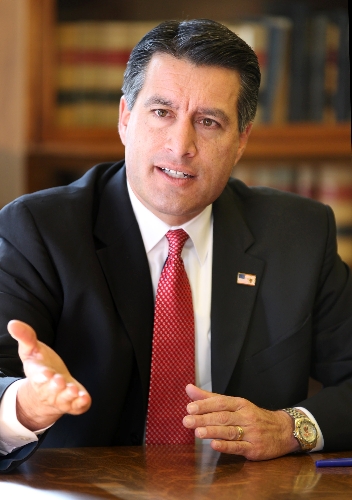2011 Legislature will have different look

The 2011 legislative session will be far different from the last regular session in 2009 for many reasons:
■ Because of term limits, there is a record crop of freshmen: 20 in the 42-member Assembly, and three in the 21-member state Senate. (Eight senators served in the lower house.) That means there will be a steep learning curve. But it also could make it easier for the Republican and Democratic caucuses to keep their new lawmakers in line.
■ Democrats hold slimmer majorities, 11-10 in the state Senate and 26-16 in the Assembly, making it tougher to challenge the governor. Three Republicans in the Senate and two in the Assembly would need to join all Democrats in both houses for the necessary two-thirds vote to approve taxes or override any veto from Gov. Brian Sandoval.
■ Brian Sandoval is not Jim Gibbons. Sandoval has promised to frequently reach out to Democrats and his GOP colleagues as they review his budget plan. Gibbons, the former GOP governor, refused to deal directly with lawmakers through most of his four-year term. Instead, Gibbons went to war with the Legislature and members of his own party who joined Democrats to override his veto of an $800 million tax package passed at the end of the 2009 session. That package, set to expire at the end of June, included increases in payroll taxes and sales taxes as well as fee hikes for car registration and business licenses.
■ State Sen. Bill Raggio is gone. The Reno Republican resigned in January after 38 years in the Senate, citing health. His retirement came after Sen. Mike McGinness of Fallon replaced him as GOP leader of a conservative caucus opposed to new taxes. For years, Raggio was the key budget deal maker. But he angered conservatives by backing tax increases in 2009 and 2003. His GOP replacement, Greg Brower, told the Washoe County Commission that appointed him he would oppose any tax increase.
■ Lawmakers must deal with the political dynamite of redistricting. Following the U.S. Census count every 10 years, each state redraws lines for legislative and congressional districts to ensure each lawmaker represents about the same number of people. Nevada’s population increase to 2.7 million earned it a fourth seat in the U.S. House of Representatives. Democrats want to draw the new district to favor them in Southern Nevada. Republicans hope to maintain an advantage in two of the four House seats.
Redistricting often is used as a bargaining chip at the end of a session. Northern Nevada lawmakers are pushing to expand the Legislature, adding at least one state Senate and two Assembly seats so they don’t lose existing districts to Southern Nevada, where 70 percent of the population lives. Democrats in the South may seek budget or other concessions in exchange.
— Laura Myers/Las Vegas Review-Journal












